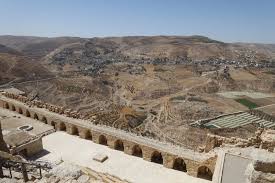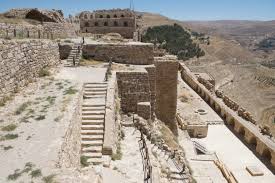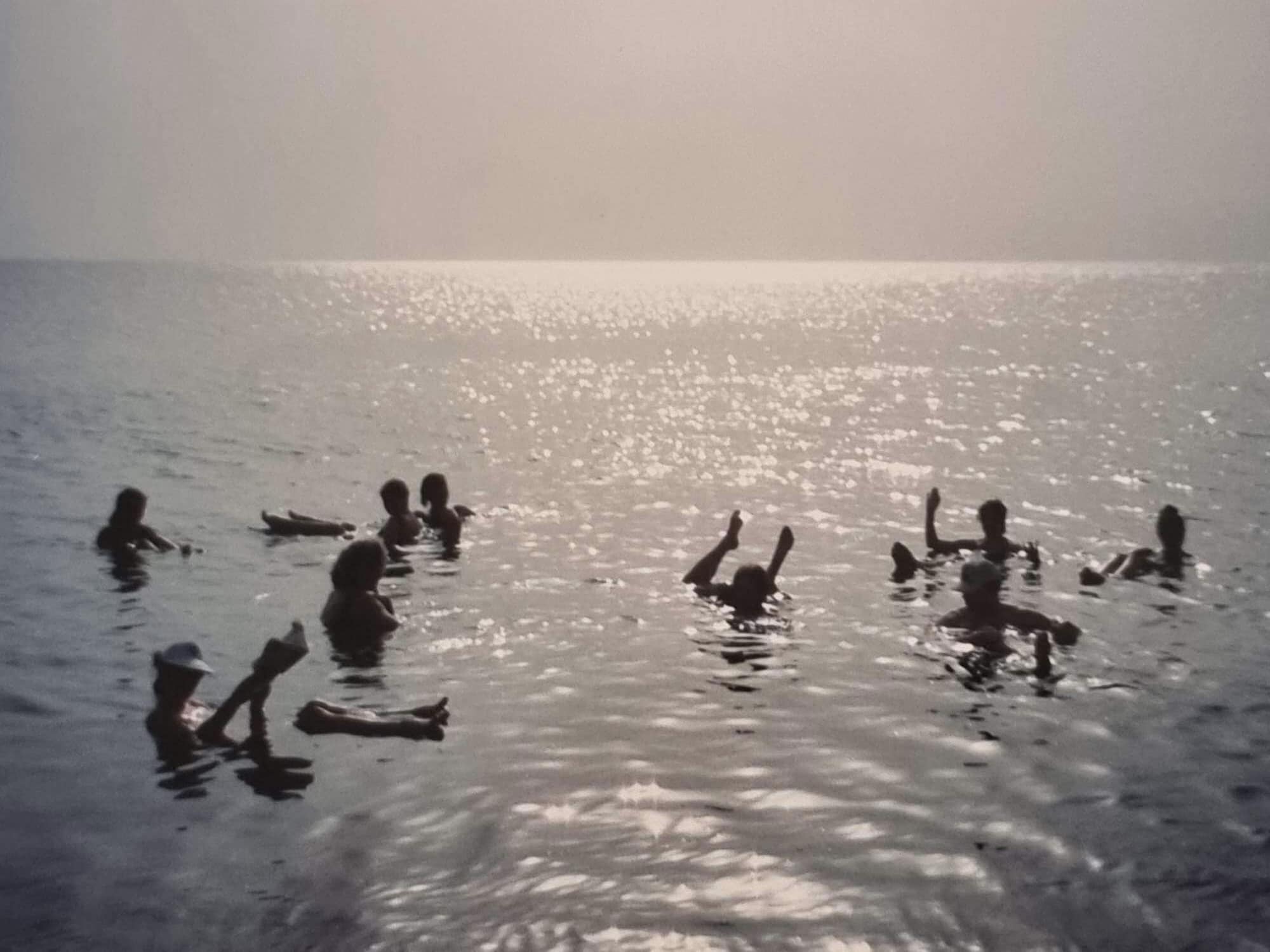
AsianOverland.net
Tour Guide - Itinerary
Asian Overland Sydney to London
Started 22/06/2022 Finished 21/06/2023365 Days ITINERARY
Day 298 date 15/04/2023DEAD SEA to AMMAN, JORDAN
ASIANOVERLAND.NET SYDNEY TO LONDON DAY 298/137/49: DEAD SEA TO AMMAN, JORDAN
5 November, 1980
The plan was to get up early, drive to the wonderfully preserved crusader Kerak Castle, and head to Amman to obtain Syrian visas for everyone. But driver Les, still drunk from the 10+ green bottles we sculled competitively the night before to entertain the locals (who shouted the beers and cheered us on ...), suddenly crashed into our room before dawn -
“I’ve lost my passport; I’ve lost my wallet; I’ve lost the carnet!!!!”
I sprang out of bed at the mention of “carnet”, as we couldn’t drive our bus, GRUNT, into Syria without a carnet de passage (GRUNT’s vehicle passport). So we fumbled around outside the buildings in the pitch black night around the Dead Sea, trying to work out where Les could have dropped his man-bag (the leather satchel bag all Top Deck crew must purchase from the leather shop Florence, if they want to be recognised as crew).
I must have forgotten about the lethally fast scorpions in the area, because I shoved my hands around the sand under some bushes, and managed to feel and locate Les’s man-bag, still miraculously intact with carnet, passport and wallet.
After the morning heart starter, we drove up the steep mountain out of the Dead Sea and towards Kerak Castle, a large Crusader castle located in al-Karak, Jordan. Construction of the castle began in the 1140s, and it is still one of the largest crusader castles in the Middle East.
In 1183 Saladin besieged the castle during the marriage of Humphrey IV of Toron and Isabella I of Jerusalem. Saladin, after some negotiations and with a chivalrous intent, agreed not to target their chamber while his siege machines mercilessly attacked the rest of the castle. Saladin has not been well known for chivalry among European Christians, but there you go.
The last siege of the 12th century was led by Sa’d Al-Din, Saladin’s nephew, in 1188. Unlike the sieges before it, the Muslim army was not under threat of crusader reinforcements (or chivalry). The year before, Saladin had defeated a 20,000 strong crusader army at the Battle of Hattin, so the crusaders could not gather enough troops to reinforce Kerak. The Muslim army cut off supplies to the castle, and Kerak surrendered several months later. Saladin also retook Jerusalem, leading the European Christians to start the Third Crusade two years later.
Kerak Castle was also besieged in 1834 by a rebel leader of the peasants' revolt in Palestine.
During the four centuries of the Ottoman Empire until 1917, Kerak Castle played an important role due to its strategic location on the crossroads between the Arabian Peninsula, Egypt and Greater Syria. Because of its position east of the Dead Sea, Kerak Castle was able to control bedouin herders as well as the trade routes from Damascus to Egypt and Mecca.
Amman is the capital and largest city of Jordan, and the country's economic, political and cultural centre. Top Deckers never stay at camping grounds near Amman, as there is free parking on the Third Circle, near the Intercontinental Hotel, which also provides free swimming, showers, toilets and toilet paper. The downside is, you have to pay for your own drinks.
The earliest evidence of settlement in Amman is known as 'Ain Ghazal, which contains some of the oldest human statues ever found, dating to 7250 BC. During the Iron Age, the city was known as Ammon, home to the Kingdom of the Ammonites. It was named Philadelphia during its Greek and Roman periods, and was finally called Amman during the Islamic period.
For much of the early and middle Islamic periods (7th–14th centuries), Amman served as a centre for the Balqa district of Syria. Afterwards, Amman was largely abandoned until 1878, when Caucasian immigrants exiled by Russia, were settled there by the Ottoman Empire.
Amman witnessed rapid growth after its designation as Transjordan's capital in 1921, and after several successive waves of refugees, particularly Palestinians in 1948 and 1967.
In 1946, Jordan became an independent state officially known as the Hashemite Kingdom of Transjordan, but was renamed in 1949 to the Hashemite Kingdom of Jordan after the country annexed the West Bank of Jordan during the 1948 Arab–Israeli War.
© This work is copyright. Apart from any use permitted under the Copyright Act 1968, no part may be reproduced by any process, nor may any other exclusive right be exercised, without the permission of Peter Searle, peter@portseavillageresort.com; 1980-2024.
Website built by Justin O’Dea www.webdeveloperdocklands.com.au





